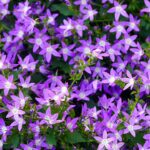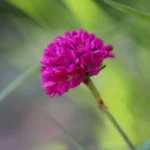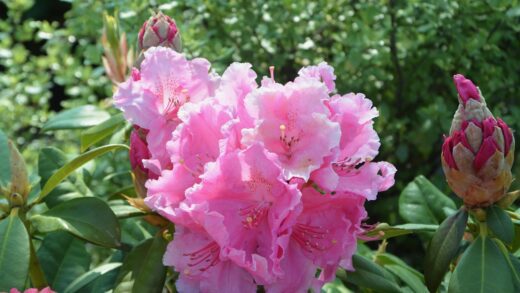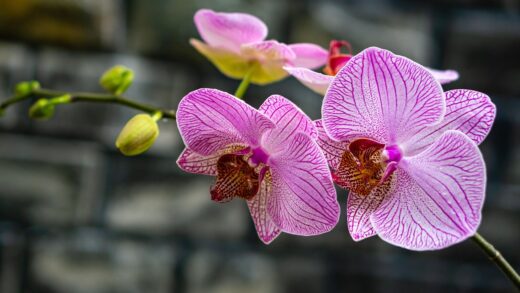Providing the proper nutrition for the wild tulip is an exercise in subtlety and understanding its natural preferences. Unlike heavily hybridized bulbs that often require significant feeding to perform well, the wild tulip is adapted to thrive in moderately fertile woodland soils. It is not a heavy feeder, and the primary goal of any fertilization program should be to replicate the slow, steady release of nutrients found in its native habitat. Over-fertilization is a far greater danger than under-fertilization, as excessive nutrients can lead to weak, floppy growth, reduced flowering, and an increased susceptibility to disease. Therefore, the focus should be on building healthy, living soil rich in organic matter rather than relying on frequent applications of chemical fertilizers.
The foundation of good nutrition for wild tulips lies not in a bag of fertilizer, but in the soil itself. A soil that is rich in organic material, such as leaf mold and well-rotted compost, provides a complex array of macro- and micronutrients that are released slowly over time as the organic matter decomposes. This process mimics the natural nutrient cycling that occurs on a forest floor, where fallen leaves and other debris create a nutrient-rich humus layer. Before planting, and as a regular top-dressing, amending the soil with these organic materials is the single most important step you can take to meet the long-term nutritional needs of your tulips.
When supplemental fertilizer is deemed necessary, the type and timing are of critical importance. Wild tulips benefit most from a fertilizer that is higher in phosphorus and potassium and lower in nitrogen. Phosphorus is vital for strong root development and bulb formation, while potassium contributes to overall plant vigor and disease resistance. Conversely, high levels of nitrogen can stimulate lush, soft foliage at the expense of flowers and can make the plant more vulnerable to fungal infections. A balanced, slow-release granular fertilizer formulated for bulbs is often the most appropriate choice.
Ultimately, the best approach to feeding wild tulips is to be a careful observer of your plants. Healthy, vigorous plants with good color and consistent flowering may not need any supplemental fertilizer at all, especially if they are growing in well-prepared, organically rich soil. If you notice signs of potential deficiency, such as pale or yellowing leaves (unrelated to dormancy) or a gradual decline in flowering over several years, then a light application of a suitable fertilizer may be warranted. A conservative and soil-focused approach will always yield the best results for this understated and beautiful wildflower.
Understanding the soil’s role
The soil is more than just a medium to anchor the wild tulip; it is a complex, living ecosystem that serves as the primary source of its nutrition. In their native woodland environment, the soil is constantly being replenished by the decomposition of fallen leaves, twigs, and other organic debris. This process creates a dark, crumbly, and nutrient-rich layer of humus. This humus is teeming with beneficial microorganisms, such as fungi and bacteria, which play a crucial role in breaking down organic matter and converting it into forms of nutrients that the tulip’s roots can readily absorb.
More articles on this topic
The physical structure of the soil is just as important as its chemical composition. A healthy woodland soil is loose and friable, with a good balance of sand, silt, and clay particles, all bound together by organic matter. This structure allows for excellent drainage, preventing waterlogging, while also retaining enough moisture to support the plant during its spring growth. Furthermore, this loose texture is vital for the wild tulip’s propagation, as it allows the underground stolons to spread easily, enabling the colony to expand and naturalize over a wider area.
The soil’s pH level also plays a significant role in nutrient availability. Most soil nutrients are most readily available to plants in a soil that is in the neutral to slightly alkaline range (a pH of around 6.5 to 7.5). Wild tulips have adapted to this pH range, which is common in many woodland soils. If your garden soil is naturally acidic, some nutrients like phosphorus may become “locked up” and unavailable to the plant, even if they are present in the soil. Therefore, testing your soil’s pH and amending it if necessary is a key step in ensuring your tulips can access the full spectrum of nutrients they need.
Building and maintaining this ideal soil environment is the most effective way to fertilize your wild tulips. This is an ongoing process, not a one-time task. Regularly top-dressing the soil with organic materials each autumn feeds the soil’s ecosystem. This, in turn, feeds the plants. This soil-centric approach creates a self-sustaining system that provides a steady, balanced diet for your tulips, promoting resilient, healthy plants that require minimal intervention and will reward you with their graceful beauty year after year.
The right type of fertilizer
When organic matter alone is not sufficient and supplemental fertilizer is needed, choosing the correct formulation is essential for the health of your wild tulips. The ideal fertilizer will have a balanced N-P-K ratio (Nitrogen-Phosphorus-Potassium) that is specifically tailored for flowering bulbs. Look for a product where the second and third numbers (phosphorus and potassium) are equal to or higher than the first number (nitrogen). For example, a ratio of 5-10-10 or 3-5-4 would be suitable. These formulations provide the necessary nutrients for root and bulb development without encouraging the excessive, soft leaf growth that high-nitrogen fertilizers promote.
More articles on this topic
Slow-release granular fertilizers are generally the best choice for feeding bulbs. These products are designed to break down gradually over several months, releasing their nutrients into the soil in a controlled manner. This mimics the slow nutrient release of decomposing organic matter and provides a steady supply of food to the plant throughout its active growing season. It also significantly reduces the risk of burning the plant’s roots, which can happen with fast-acting liquid or synthetic fertilizers if they are applied improperly or in excessive concentrations.
Organic fertilizer options are an excellent way to supplement the soil’s natural fertility. Bone meal is a classic bulb amendment, valued for its high phosphorus content, which directly supports robust root growth and bulb formation. It is a very slow-release material and is best incorporated into the soil at the time of planting. Another valuable organic option is greensand, which is a good source of potassium and various trace minerals that contribute to the overall health and disease resistance of the plant. These organic choices work in harmony with the soil’s ecosystem.
What to avoid is just as important as what to use. Steer clear of high-nitrogen lawn fertilizers, as these will produce a flush of lush, weak foliage that is prone to disease and will divert energy away from flower production and bulb storage. Fresh, un-composted manure should also be avoided, as its high nitrogen content and potential for carrying pathogens can damage the bulbs. Similarly, be very cautious with highly concentrated liquid fertilizers, as it is easy to over-apply them and cause chemical burn to the sensitive root system. A gentle, slow, and steady approach is always best.
Timing of fertilizer application
The timing of when you apply fertilizer is just as critical as the type you use, as it must coincide with the periods when the plant is actively absorbing nutrients. The most effective time to fertilize wild tulips is in the autumn, at the same time you are planting the bulbs. By incorporating a granular, slow-release bulb food or bone meal into the soil beneath the bulbs, you provide a nutrient source that will be available to the newly forming roots as they begin to grow throughout the autumn and winter. This helps the bulb to establish itself quickly and build a strong foundation for the spring.
If you are fertilizing an established colony of wild tulips, an alternative application time is in the very early spring, just as the first green shoots are emerging from the ground. Applying a balanced, slow-release fertilizer at this stage gives the plant a nutrient boost right as it enters its most vigorous period of growth. Gently scratch the granular fertilizer into the soil surface around the plants, taking care not to damage the emerging foliage. The spring rains will then carry the nutrients down into the root zone where they can be readily absorbed by the plant to fuel the development of leaves and flowers.
It is crucial to avoid fertilizing the tulips while they are in full bloom or after they have finished flowering. Applying fertilizer late in the season, especially nitrogen-rich fertilizer, can stimulate new growth at a time when the plant is naturally trying to enter dormancy. This can confuse the plant’s life cycle and make it more vulnerable to disease and winter damage. The nutritional support is needed during the root formation and foliage growth phases, not after the plant’s primary work for the season is already done.
For established plantings, a single annual application of fertilizer is typically sufficient. This can be done either in the autumn as a top dressing, combined with a layer of compost, or in the early spring as the shoots emerge. The autumn application is often preferred as it more closely mimics the natural cycle of nutrient availability from decomposing leaf litter. Whichever time you choose, consistency is key. A light feeding each year will help to replenish the nutrients in the soil and maintain the vigor of your tulip colony for the long term.
Avoiding common fertilization mistakes
One of the most frequent and damaging mistakes in fertilizing wild tulips is applying too much. These plants are adapted to thrive on lean nutrition, and an excess of fertilizer can cause a host of problems. Over-fertilization, particularly with nitrogen, leads to rapid, weak, and leggy growth of the foliage, which can become floppy and is much more susceptible to fungal diseases like botrytis blight. It can also inhibit flower production, resulting in a lush patch of leaves with few or no blooms. It is always better to err on the side of caution and apply less fertilizer than you think you might need.
Another common error is applying fertilizer directly onto the bulb or the crown of the plant. Concentrated fertilizer granules, especially synthetic ones, can cause chemical burns if they come into direct contact with the plant tissue. When planting, place the fertilizer in the bottom of the hole and cover it with a thin layer of soil before setting the bulb on top. For established plants, broadcast the fertilizer on the soil surface around the plants, not directly on them. This allows the nutrients to be diluted and carried into the soil with water, preventing any direct damage.
Using the wrong type of fertilizer is a mistake that can undermine all your efforts. As previously mentioned, high-nitrogen fertilizers designed for lawns or leafy vegetables are entirely inappropriate for wild tulips. This imbalance of nutrients disrupts the natural growth cycle of the bulb, prioritizing leaf production over the crucial functions of flowering and energy storage in the bulb. Always choose a fertilizer that is specifically formulated for bulbs or has a low-nitrogen, high-phosphorus and potassium profile to support the unique needs of these plants.
Finally, a significant mistake is neglecting the foundational role of soil health in favor of a purely chemical approach to feeding. Simply adding synthetic fertilizers to poor, compacted, and lifeless soil is not a sustainable strategy. This approach can lead to a buildup of salts in the soil and does nothing to improve its structure or biological activity. The most successful long-term approach is to focus on building a healthy, organic-rich soil. This creates a resilient and self-sustaining environment where your wild tulips will thrive with minimal need for supplemental fertilizers.
















